What does a floribunda rose look like?
Floribunda rose, what is it?
The floribunda rose is the result of complex and repeated crossings of a large number of different varieties of roses.
Representatives of this garden group are distinguished by bushy, compact growth; the height of the bushes varies - from low to vigorous.The flowers, collected in large or medium-sized inflorescences, are simple, semi-double and double, usually of medium size (there are also large ones), and are often similar in shape to hybrid tea roses. The flowers of certain varieties have a scent.
Floribunda roses are widely used for group plantings in the foreground, in borders or as a hedge. They have no equal in abundance and duration of flowering. In general, these flowers are easier to care for, more unpretentious and more frost-resistant than hybrid teas.
They are simply created for a small garden plot. For beginning rose growers, we can recommend mastering the art of growing roses from representatives of this particular garden group.
Floribunda is one of the most popular groups of garden roses. The main advantages are long flowering, an abundance of colors and aromas, unpretentiousness, and high winter hardiness.
Planting floribunda roses
Selection of seedlings. A grafted rose seedling should have 2-3 well-ripened woody shoots with green, intact bark and a developed root system with many thin roots (lobe). Be sure to pay attention to the root collar (grafting site). The diameter of the root collar should be the same above and below the grafting site and not exceed 5-8 mm.
The roots of dried seedlings should be immersed in cold water for a day before planting. All broken and dry parts of shoots and roots must be trimmed back to healthy tissue. Shorten healthy shoots to 35 cm, cut roots to a length of 25-30 cm.
Where is the best place to plant? Floribunda roses need as much light as possible.This, however, does not mean that they should only be exposed to direct sunlight throughout the day.
When the sun shines on roses all day, they quickly fade. If, in addition, they are planted near the southern walls of buildings, they suffer from sunburn and excessive dryness.
For planting, you need to choose corners where the plant is slightly shaded for at least part of the day, especially in the midday heat. They are also harmed by the constant drying draft that usually occurs near the corners of buildings, in the passages between them.
Preparing the soil for planting. Roses grow well in light, deep and not too dry sandy clay soil, which should be sufficiently breathable, when watering or during rain, it should absorb water well, without letting it pass immediately and completely into the subsoil horizon, so that plant roots and soil microorganisms always have the necessary moisture and air. This is what soil happens when it is generously replenished with humus.
The landing site should be prepared in advance. It is enough to dig up sandy or clay garden soil to the depth of a shovel, while adding chemical (phosphorus) fertilizers to the soil, in its lower layer. It is also useful to add substances rich in humus, for example, compost or well-rested manure.
Time to plant floribunda roses in the middle zone:
- spring: from April 20 to May 30.
- autumn: September 10 to October 20.
Landing. There are two ways to plant roses.
1. In this case, it is better to plant together. The prepared mixture is poured onto the bottom of a pre-dug hole. One is holding a rose. The depth to which the plant is lowered into the hole is determined by the grafting site, which should be 3-8 cm below the soil level.The second straightens the roots and gradually covers them with soil mixture, carefully compacting it with his hands. After planting, the seedling is watered abundantly, and when the water is completely absorbed, it is covered with earth and left until spring.
When planting, try not to damage the bark on the root collar and skeletal roots.
2 A bucket of water with a heteroauxin tablet dissolved in it is poured into the pit or sodium humate is added until the color of weakly brewed tea is obtained. Hold the seedling with one hand, lowering it into the center of the hole, directly into the water, and with the other, gradually fill the hole with the prepared soil mixture. Earth with water fills the space between the roots well and does not form voids. Shake the seedling periodically and compact the soil well.
In this case, watering is not needed. If the ground has subsided, then the next day you need to slightly raise the seedling, add soil and hill it up by 10-15 cm. Then the plant needs to be shaded for 10-12 days.
The root collar (grafting site) should be 3-8 cm below the soil level for any planting method. The fact is that new buds and shoots form on the seedling where it is well lit by the sun. If the grafting site is above the soil level, then new shoots are formed on the rootstock (rose hips) and abundant wild growth appears, and in dry, hot weather the plant dries out and the plant develops poorly.
When planting in late spring, carried out in dry, warm weather, it is useful to cover the soil with a layer of wet peat, or even cover the stem with wet moss or some other material that retains moisture for a long time.Protect the crown of the plant from strong sunlight with paper. After planting, the shoots are pruned to 2 - 4 buds.
Caring for floribunda roses
Caring for floribunda roses comes down to regular watering, fertilizing, loosening and mulching the soil, pruning and covering plants for the winter.
How to water? Rose needs quite a lot of water. During different growth phases, the plant's need for water is not the same. She needs it most during the period of most intensive development, i.e. Just in time, when the buds open, shoots and leaves appear, and also after the end of the first flowering, when new shoots begin to grow.
As you can see, roses must be carefully cared for and watered properly without a sufficient amount of water and nutrients, the rose produces only weak shoots and frail, underdeveloped flowers, which, as a rule, are not double and have a short stem. The moisture that rain brings is very rarely sufficient. Superficial, even daily, watering does not matter to them.
Never water plants in hot weather. It is recommended to pour the settled water from a watering can without a sprinkler, in a stream, directly to the base of the bush, into a shallow hole. It is important not to spray the leaves. When irrigating by sprinkling, as a rule, less water gets into the soil than expected. But if there is no other possibility, then at least there is no need to do this under the scorching rays of the sun and choose the watering time so that the leaves have time to dry before evening. At night, the risk of fungal diseases affecting wet leaves increases.
At different times of the year, floribunda roses require different care. The end of summer and autumn is the time when excessive watering is not beneficial, but rather, on the contrary, harms them.Excess water encourages plants to grow further; as a result, the shoots do not have time to ripen in a timely manner and can be easily damaged by frost. Therefore, with the onset of September, it is better not to water roses; natural precipitation is enough for them. But if the autumn is very dry, then you will still have to water moderately so that when they enter the winter period they are not left without moisture in the roots.
How to feed? An important part of caring for roses is providing them with proper nutrition and especially fertilizer. For this, as a rule, complex combined fertilizers are used. Floribunda rose is especially sensitive to high salt content in the soil solution, so you should not overuse large doses of fertilizers, especially on heavier soils, from which salts are washed out slowly.
In addition to mineral fertilizers, when caring for roses, gardeners often use organic fertilizers. The soil should be fertilized with manure in advance of planting. It is applied to the top layer of soil, adding approximately 8 kg per 1 m2 on light soils and about half of this norm on heavy soils. The best manure is cow manure.
The roots should never come into contact with fresh manure. For young seedlings this is simply disastrous. Therefore, manure must be placed in the ground long before planting. Bone or horn meal is also suitable for fertilizing roses.
In the first year after planting, the rose is not fertilized at all. They begin to apply fertilizers only from the second year and then do it regularly, every spring and every summer.
When to fertilize
An approximate fertilizer application scheme is as follows:
- In early spring, as soon as the weather permits, even before the roses begin to open, apply 60-80 g of complete fertilizers per 1 m2 of area, scattering them evenly over the entire surface. Once the roses are opened, these fertilizers will be shallowly buried in the soil.
- Around mid-May, when buds begin to appear on the bushes, after rain or watering, the plants are fed with a solution of fast-acting complete fertilizers. Optimal dose: 30 g of fertilizer per 10 liters of water. 3 liters of solution is poured under each bush.
- At the end of June, nutrient watering is repeated, adhering to the same norm and again on well-moistened soil.
- At the end of October or beginning of November, potassium fertilizers that do not contain chlorine are scattered over the surface at the rate of 30 g per 1 m2 and the same amount of phosphorus fertilizers for the same area. If the bushes are covered by raking soil on them, reserve fertilizers can be added after covering the plants.
Loosening and mulching. Roses need loose, weed-free soil that allows air to easily penetrate and warms up well. Frequent loosening saves the gardener fertilizer and water for irrigation.
However, deep loosening can sometimes be detrimental to a rose if its roots are damaged. That is why tillage should be shallow, to a depth not exceeding 10 cm.
When caring for floribunda roses, it is good to use flooring and mulch. When mulching, the surface of the ground is covered with suitable material, such as leaves, hay, peat or old, well-decomposed manure. It is advisable in the spring, immediately after pruning and cultivating the beds and flower beds, to spread a layer of mulch of about 8 cm between the rose bushes.
Pruning floribunda roses
The list of activities for caring for floribunda roses also includes annual pruning of roses. Roses need pruning, its purpose is to rejuvenate the bushes. Heavy and medium pruning are based on the ability of these roses to quickly recover and produce flowering shoots from the base of the bush. Flower buds are laid throughout the season (at short intervals), which leads to continuous, abundant, long-lasting flowering. First of all, dry, damaged and thin branches are removed, leaving only a few strong shoots.
Floribunda roses can be pruned in the spring in the same way as hybrid tea roses, leaving 3-5 strong shoots on each bush, shortening them by 3-4 buds, approximately at a height of 10 cm from the surface of the ground. With medium pruning, 4-6 buds are left. If there are side shoots on the main stem, they are shortened.
In the fall, the bushes are not pruned much; the main pruning is carried out in the spring.
Shelter for the winter
Floribunda roses are considered unpretentious, caring for them is not difficult, they recover much faster than hybrid tea roses from frost damage. However, in the middle zone these roses also need to be covered. To do this, the bushes are cut in half (to a height of 40 cm) and the leaves remaining on the shoots are removed.
Then they are covered with earth to a height of 20-30 cm and covered with spruce branches, oak leaves, and non-woven material in case of cold, snowless weather. When snow cover is established, the roses will be completely protected from frost.

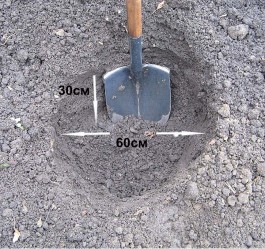
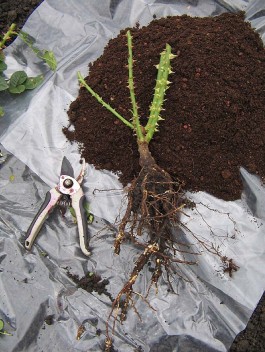
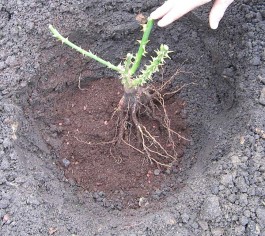
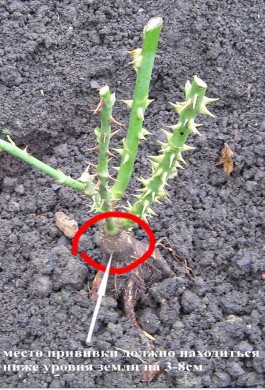

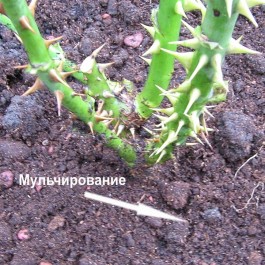



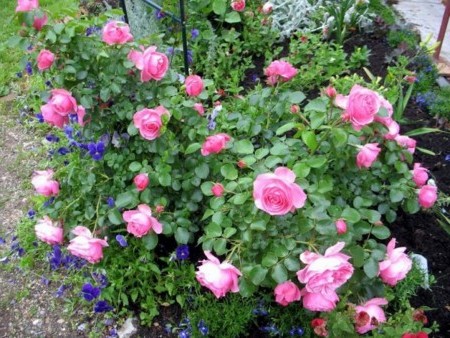


 (40 ratings, average: 4,60 out of 5)
(40 ratings, average: 4,60 out of 5) CUCUMBERS NEVER GET SICK, I'VE BEEN USING ONLY THIS FOR 40 YEARS! I SHARE A SECRET WITH YOU, CUCUMBERS ARE LIKE THE PICTURE!
CUCUMBERS NEVER GET SICK, I'VE BEEN USING ONLY THIS FOR 40 YEARS! I SHARE A SECRET WITH YOU, CUCUMBERS ARE LIKE THE PICTURE! You can dig a bucket of potatoes from each bush. Do you think these are fairy tales? Watch the video
You can dig a bucket of potatoes from each bush. Do you think these are fairy tales? Watch the video
 How our fellow gardeners work in Korea. There is a lot to learn and just fun to watch.
How our fellow gardeners work in Korea. There is a lot to learn and just fun to watch. Eye trainer. The author claims that with daily viewing, vision is restored. They don't charge money for views.
Eye trainer. The author claims that with daily viewing, vision is restored. They don't charge money for views. A 3-ingredient cake recipe in 30 minutes is better than Napoleon. Simple and very tasty.
A 3-ingredient cake recipe in 30 minutes is better than Napoleon. Simple and very tasty. Therapeutic exercises for cervical osteochondrosis. A complete set of exercises.
Therapeutic exercises for cervical osteochondrosis. A complete set of exercises. Which indoor plants match your zodiac sign?
Which indoor plants match your zodiac sign? What about them? Excursion to German dachas.
What about them? Excursion to German dachas.
Now I will know what a floribunda rose is, the article will certainly be useful to all lovers of growing roses.
With proper planting and compliance with all care requirements, all summer until autumn you can admire a spectacular and bright flower garden with floribunda roses.
Yes, it was correctly noted about watering; you only need to water any roses at the root. We used to water the roses in the evening, but we always doused them with “rain”, as powdery mildew tormented us. And when they stopped raining, the roses almost stopped hurting.
That’s right, watering rose bushes with “rain” promotes the development of powdery mildew.